As others have mentioned, if you want to stay in Python + Networkx, you could use could_be_isomorphic to filter your graphs.
The problem is that this method expects 2 graphs as an input, not millions. If you compare every pair of graphs with this method, it would take an awfully long time.
Looking at the sourcecode of could_be_isomorphic, it compares degree, triangle, and number of cliques sequences for both graphs. If they're not equal, the graphs cannot be isomorphic.
You could pack this fingerprint in a function, sort your graphs according to this fingerprint and group them with itertools.groupby. There will be a huge majority of lone graphs. The few graphs that have the same fingerprints can then be checked for isomorphism.
Using a list of 100 000 random graphs:
many_graphs = [nx.fast_gnp_random_graph(random.randint(16, 22), 0.2) for _ in range(100000)]
There were only 500 fingerprints that were shared by at least 2 graphs. If you add edge types information, there will be even fewer common fingerprints.
Here's an example with 3000 graphs, each having between 10 and 14 nodes:
import networkx as nx
from itertools import groupby
import random
many_graphs = [nx.fast_gnp_random_graph(
random.randint(10, 14), 0.3) for _ in range(3000)]
def graph_fingerprint(g):
order = g.order()
d = g.degree()
t = nx.triangles(g)
c = nx.number_of_cliques(g)
props = [[d[v], t[v], c[v]] for v in d]
props.sort()
# TODO: Add count of edge types.
return(props)
sorted_graphs = sorted(many_graphs, key=graph_fingerprint)
for f, g in groupby(sorted_graphs, key=graph_fingerprint):
similar_graphs = list(g)
n = len(similar_graphs)
if n > 1:
print("Found %d graphs which could be isomorphic." % n)
for i in range(n):
for j in range(i + 1, n):
g1, g2 = similar_graphs[i], similar_graphs[j]
if g1 != g2 and nx.is_isomorphic(g1, g2):
print(" %s and %s are isomorphic!" %
(nx.generate_graph6(g1,header=False), nx.generate_graph6(g2,header=False)))
It finds 4 isomorphic pairs in less than 1s:
Found 2 graphs which could be isomorphic.
Found 3 graphs which could be isomorphic.
Id?OGG_C? and IaKO_@?@? are isomorphic!
Found 6 graphs which could be isomorphic.
I?OWcGG?G and I?OCSa?@_ are isomorphic!
Found 2 graphs which could be isomorphic.
Found 2 graphs which could be isomorphic.
I_uI???JG and II??QDNA? are isomorphic!
Found 2 graphs which could be isomorphic.
Found 2 graphs which could be isomorphic.
Found 3 graphs which could be isomorphic.
Found 3 graphs which could be isomorphic.
Found 2 graphs which could be isomorphic.
Found 2 graphs which could be isomorphic.
Found 2 graphs which could be isomorphic.
Found 3 graphs which could be isomorphic.
Found 2 graphs which could be isomorphic.
Found 2 graphs which could be isomorphic.
Found 2 graphs which could be isomorphic.
Found 2 graphs which could be isomorphic.
Found 3 graphs which could be isomorphic.
Found 2 graphs which could be isomorphic.
Found 2 graphs which could be isomorphic.
Found 2 graphs which could be isomorphic.
Found 2 graphs which could be isomorphic.
IDOCCY@GG and IOGC@`dS? are isomorphic!
Found 3 graphs which could be isomorphic.
Found 2 graphs which could be isomorphic.
Found 2 graphs which could be isomorphic.
Found 2 graphs which could be isomorphic.
Found 2 graphs which could be isomorphic.
Found 2 graphs which could be isomorphic.
Found 2 graphs which could be isomorphic.
Found 3 graphs which could be isomorphic.
Found 2 graphs which could be isomorphic.
Found 2 graphs which could be isomorphic.
Found 2 graphs which could be isomorphic.
Found 2 graphs which could be isomorphic.
Found 2 graphs which could be isomorphic.
Found 2 graphs which could be isomorphic.
Found 2 graphs which could be isomorphic.
Found 2 graphs which could be isomorphic.
Found 3 graphs which could be isomorphic.
Found 2 graphs which could be isomorphic.
Found 3 graphs which could be isomorphic.
Found 2 graphs which could be isomorphic.
Found 2 graphs which could be isomorphic.
Found 2 graphs which could be isomorphic.
Found 2 graphs which could be isomorphic.
Found 2 graphs which could be isomorphic.
Found 2 graphs which could be isomorphic.
Here are the 2 last isomorphic graphs. "IDOCCY@GG":

and "IOGC@\dS?":

Here are 2 graphs which have the same fingerprint but aren't isomorphic:


The fingerprinting could be done in parallel. Sorting and grouping would have to happen on 1 CPU, but the isomorphism check for each group could be done in distinct CPUs.



